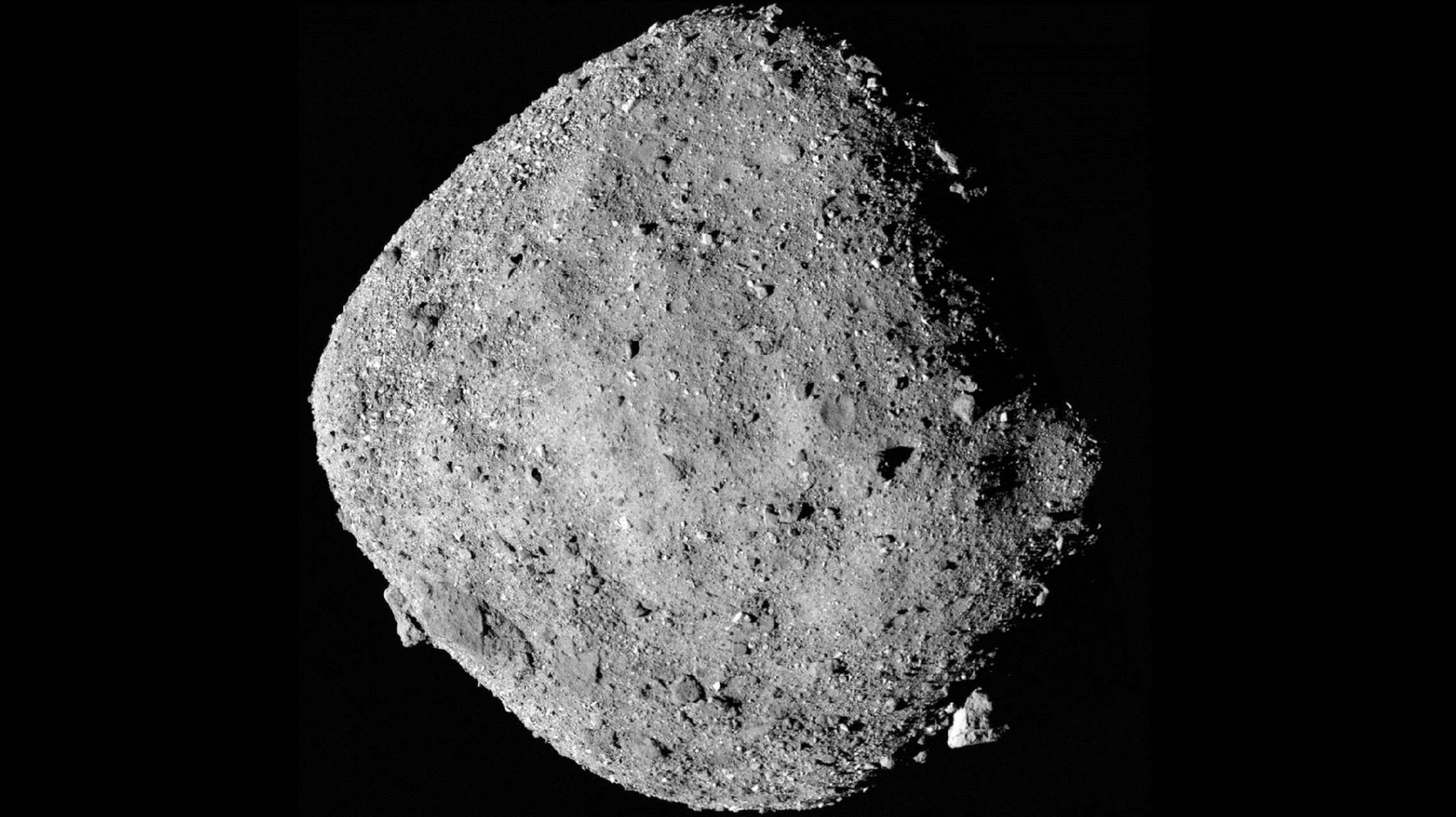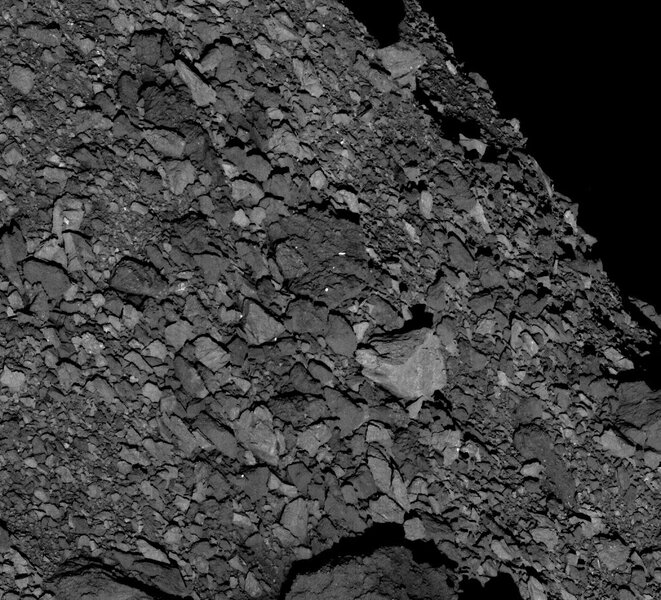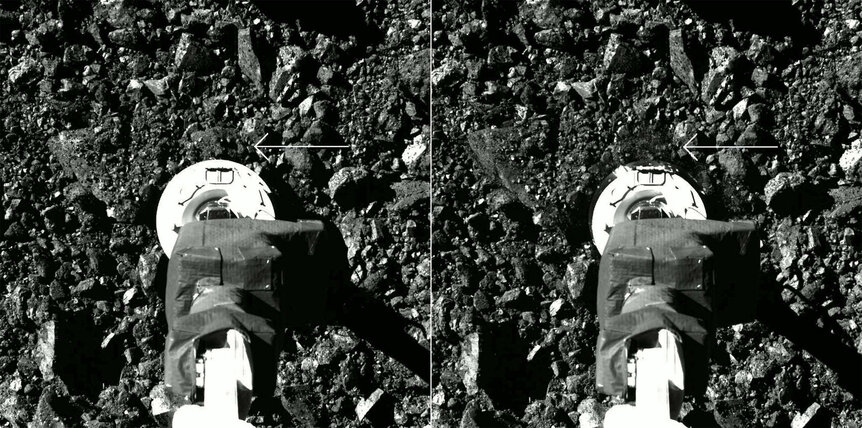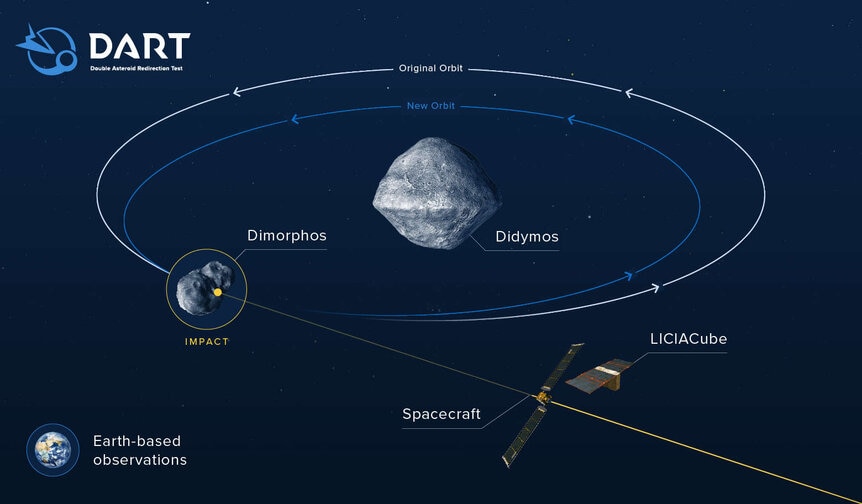Create a free profile to get unlimited access to exclusive videos, sweepstakes, and more!
The best shielding against small meteorite impacts? Cover yourself in rubble
Bennu has a natural force field to protect it: Crumbly rocks.

The asteroid Bennu has natural armor against small meteorite impacts: It’s covered in Styrofoam-like rubble.
That’s the conclusion drawn by a team of scientists looking at (101955) Bennu, a wee 500-meter-wide near-Earth asteroid that was visited by the OSIRIS-REx spacecraft from 2018 to 2021. Bennu is a rubble pile asteroid; it’s not a solid monolithic piece of rock but instead a more like a collection of millions of small rocks all held together by their own mutual gravity.
It’s thought that rubble pile asteroids may have once been more solid, but when an asteroid chunk gets hit by another asteroid it can shatter into a myriad of pieces which then recollect into the loosely held aggregation. The gravity of a small asteroid like Bennu is incredibly weak — you’d weigh a fraction of an ounce standing on its surface — but it’s enough to hold it together.
The astronomers looking into Bennu investigated images taken by OSIRIS-REx to look at craters. Impact craters can tell you a lot about an object. In general there are few really big ones, more medium-sized ones, and countless small ones. That’s true, at least, for big, solid objects like planets and moons.
They looked at a total of 1,560 craters on Bennu, and found something very interesting [link to paper]. It does have a few big craters and more medium ones. But then it pulls a switch: There are actually very few small ones. The size distribution of craters turns over around 2-3 meters; in other words the number of them increases as the craters get smaller until they reach a size below 2-3 meters, where they actually become fewer in number.
Why?
Rocks!
The surface of Bennu is covered in, well, rubble. These rocks can be very small, up to boulders many meters across. Importantly, despite looking like the detritus left after a construction project, the rocks on Bennu are not like those on Earth. They’re very porous and friable — crumbly. So much so that the big boulders seen precariously balanced on the surface of the asteroid might collapse under their own weight here on Earth.
For example, OSIRIS-Rex touched down briefly on the surface of Bennu to collect samples. Despite moving at a leisurely 10 centimeters per second — normal walking speed is 10 times faster — the spacecraft still crushed a 20-cm rock sitting on the surface, showing that the rock was held together basically by a whisper.
You’d think that something that would be crushed by a kitten sitting on it would make terrible armor, but in fact the opposite is true. Small rocks moving through space at high speed make craters when they hit a solid surface as the huge kinetic energy (the energy of motion) is converted into mechanical energy, displacing and ejecting the surface material and digging out a crater. But if the surface is made of crunchy rocks, a lot of the impactor’s energy goes into crushing those rocks instead of displacing the material to make a crater.
This has major implications both for the science of asteroids and the important task of moving one out of the way should it be headed for Earth. In the latter case, one idea is simply smacking the asteroid hard with a massive space probe, so that the momentum of the probe pushes the asteroid onto a different trajectory. This is the reasoning behind the DART mission, which in October of 2022 will impact the small moon Dimorphos of the slightly larger asteroid Didymos and change its orbit very slightly.
But if the target asteroid is a rubble pile, a lot of the impact energy will go into crushing and shuffling around the surface material instead of moving the asteroid out of the way. So understanding how they behave under impact could actually save the world.
And the science is cool too. For example, looking at the distributions of craters sizes on an asteroid and knowing how much junk is put there in space that can hit it, you can estimate the age of the surface. Over time small craters get erased by smaller impacts, while big ones can last much longer. For Bennu, the scientists estimate craters bigger than 100 meters across can survive for 10 – 65 million years before being eroded away, while small ones a few meters across can last only a couple of million years tops. It was thought previously those numbers were about 15 times higher, but Bennu’s natural crumbly armor means the erosion happens much more rapidly.
Like Earth, the surface of Bennu is much younger than the asteroid itself, changing on a cosmically rapid timescale. It’s an important step in understanding how asteroids change over time. Beauty may only be skin deep, but on asteroids that skin can make you look way younger than you really are.
There may be more practical benefits to this knowledge, too. Covering a spaceship with porous rubble may not be cost-effective, but a friable layer of material under the ship’s skin could protect it from smaller micrometeorites. Such a layer has been used in spacesuits for decades. Seeing it in action in a natural environment could give future engineers ideas for upgrades.
And if we do spot a rubble pile on its way toward Earth, there are other ideas besides whacking it — you may be dismayed that using a nuke is a good option, though maybe not for the reason you think. Point being that the more we study these asteroids the more likely we can learn how to prevent them from ruining our day… and learn some way cool science in the meantime.





























